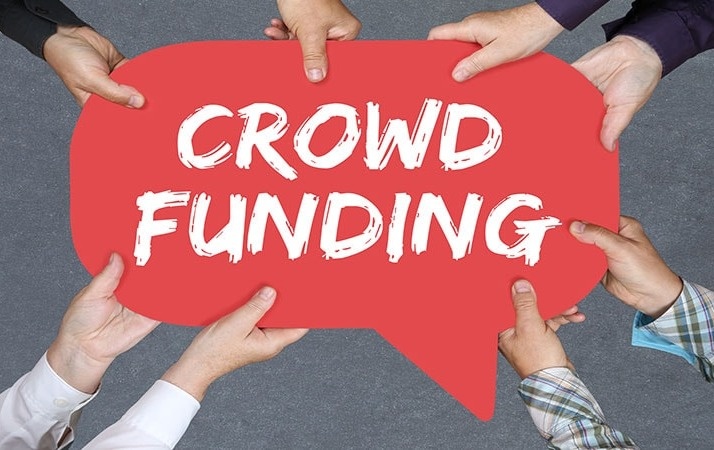The Startups Team

Crowdfunding is a method of raising capital through the collective effort of friends, family, customers, and individual investors.
This approach taps into the collective efforts of a large pool of individuals — primarily online via social media and crowdfunding platforms — and leverages their networks for greater reach and exposure.
Sounds great, right?
But because this method is relatively new, many people don’t understand exactly how crowdfunding works.
Simply stated, crowdfunding works by presenting your idea to people inside and outside of your network and allowing them to contribute toward your fundraising goals online.
Who is the "Crowd" Anyway?
The crowd is essentially your personal network, potential customers, and — in the case of an equity fundraise — outside investors.
The popular myth about how crowdfunding works is that you post an idea and thousands of strangers give you money.
That absolutely doesn't happen — it’s not magic!
The Three Networks of Crowdfunding
1. Your Personal Network.
You’re personal network — and often your most important network when crowdfunding — is your friends, family and colleagues. They’re the people that support you mostly because they want to see you succeed. Your relationship with them is a big driver of their support.
2. Friends of Friends.
Often the most amazing part of crowdfunding is discovering the people you never realized you had a connection with. This tends to be people who your friends share your fundraise opportunity with, through methods like social media, email, or word of mouth.
3. Potential Customers.
Your potential customers are people who have an interest in what you're actually going to produce and would love to be an early customer.
They’re your “customer zero.”
These customers are often discovered through PR that you generate, campaigns through social media, or marketing to existing customers lists.
To truly get the most out of crowdfunding, you need to tap into all three of these methods simultaneously, in order to build a strong network effect in a short period of time.
For more detail on how this works, take a look at our explanation of crowdfunding marketing.
How a Crowdfunding Campaign Works
One of the biggest misconceptions people have about startup crowdfunding: that crowdfunding is supposed to be easy.
There’s this idea out there that you can just throw a crowdfunding profile together in 10 minutes, post it, and within hours backers will be breaking down your door and breaking out their wallets ready to turn over their money.
But the reality of crowdfunding is very different.
There’s no mythical built-in community of backers who just sit on Kickstarter all day hitting refresh and looking for new projects to back. The only way to make sure your profile gets traffic is to drive it there yourself.
And that takes a ton of work.
Steps to Launch a Crowdfunding Campaign
1. Create a Profile.
Creating a compelling crowdfunding profile is critical to your success. This typically involves a pitch video, supporting copy, product images, and explanatory graphics.
2. Set a Funding Goal.
How much money do you want to raise? Obviously, determining that number is an essential part of crowdfunding.
It’s also important to keep in mind that some crowdfunding sites have options to collect money raised even if the goal isn’t met, while others require that you meet your goal before you can collect any funding.
In that case, if you don't reach your goal, no contributions will be collected. Therefore, it's important to set a goal that is achievable.
3. Gather Backers.
Where are your backers?
In the weeks leading up to the launch of your crowdfunding campaign, you should be drafting email newsletters to send to your personal and professional networks, securing early commitments from friends and family, reaching out to potential partners and press contacts.
The first few days of a crowdfunding campaign are critical, so make sure to get commitments and work up hype before you launch.
4. Market to Your Audience.
Great marketing is critical for a successful crowdfunding campaign. And it’s a lot of work.
In fact, marketing takes so much work, some companies assign dedicated team members or even a whole group of people to just do crowdfunding for as long as the campaign lasts.
Regardless of whether a dedicated crowdfunding task force is in the cards or not, you’re going to be leaning on your team a lot to make your campaign a success.
5. Collect Funds.
If your goal is successful, funding is transferred to your account in one of two ways:
-
With rewards crowdfunding: credit cards are charged and money is wired to your account.
-
With equity crowdfunding: you work directly with investors to close the transaction.
The Three Things Crowdfunding Does Well
1. Publicly Announces Your Idea.
Providing a platform to communicate your idea is incredibly valuable.
2. Leverages Your Network.
A shareable profile allows you to syndicate your raise across your network, and more importantly, to friends of friends. This is really how crowdfunding works to your benefit.
3. Coordinates Your Fundraise Quickly.
Crowdfunding serves as a central point to push all supporters to in a short period of time, usually between 30 and 90 days. At the end of the fundraise, funds are collected from supporters.
What are Crowdfunding Incentives?
Crowdfunding works by offering an incentive to backers. These incentives fall into two major categories: rewards crowdfunding and equity crowdfunding.
Rewards Crowdfunding
Rewards-based crowdfunding involves individuals contributing to a business in exchange for a “reward,” typically a form of the product or service the company offers.
Even though this method offers backers a reward, it’s still generally considered a subset of donation-based crowdfunding since there is no financial or equity return.
This approach is a popular option on Fundable, as well other popular crowdfunding platforms like Kickstarter and Indiegogo, because it lets business-owners incentivize their contributor without incurring much extra expense or selling ownership stake.
Key Highlights of a Rewards Campaign
- Offer pre-orders, value incentives
- Typically raising less than $50,000 (but can be more)
- Anyone can back you
- No equity dilution
Equity Crowdfunding
Equity-based crowdfunding allows contributors to become part-owners of a company by trading capital for equity shares.
As equity owners, contributors receive a financial return on their investment and ultimately receive a share of the profits in the form of a dividend or distribution.
Equity crowdfunding is perfect for companies that are looking to raise more capital than those that choose a rewards-based approach.
These companies are typically seeking sums higher than $50k and have achieved social proof and gained enough traction to incentive their backers with the chance to own a small piece of their company as it grows.
The very nature of equity crowdfunding makes it a considerably more involved fundraising approach than rewards crowdfunding.
Add to that the fact that it’s still a fairly new funding method and that the rules and regulations are still evolving with new federal legislation, and it can be a little tricky to navigate.
Highlights of an Equity Campaign
- Offer equity stake in exchange for investment
- Typically raising more than $50,000
- Only Accredited Investors can invest
- You may choose to use either method, but not both at the same time. Since campaigns run on a fixed period typically 30 - 90 days, it's possible to run campaigns in succession. For example, if you wanted to run a rewards campaign to generate product interest and then an equity campaign to raise operating capital to grow the business, that would be great.
Crowdfunding Case Study: Fundable
In order to get a clearer understanding of how crowdfunding works, let’s take a look at Fundable: Startups.com's own personal fundraising platform that enables startups to quickly engage a large network of backers to raise capital.
Here's how Fundable works:
1. Create a Profile
Each startup must create a company profile that provides an overview of the company, product, and funding goals. Newly created profiles are reviewed by the Fundable team to make sure that they are a good fit for the platform.
2. Set Fundraising Terms by Choosing Rewards or Equity.
Startups can offer potential backers rewards or equity in exchange for funding (but not both simultaneously).
Rewards are items of value, such as a pre-order of a new product or services the startup can render in exchange for support. Equity is a share of stock in the company offered to a backer in exchange for capital.
A successful rewards raise can be a great foundation of support for a subsequent equity raise.
3. Market Your Fundraise
Fundable is a powerful platform for marketing your fundraise.
Utilizing our step-by-step Profile Creation Wizard, you can quickly showcase your company and begin sharing your fundraise with friends, family, colleagues, customers, and the media.
By exposing your fundraise to a comprehensive support base, you increase your visibility and identify new channels of support. Ancillary benefits include new customers, a more engaged social following, and advocates in the media.
4. Gather Backer Commitments
Backers can easily view your fundraise and commit funds to your company directly through your profile.
-
For a rewards raises, the minimum commitment for backers can be as little as $1, and backers can make a simple contribution via credit card. For equity raises, the minimum commitment is $1,000.
-
Equity commitments are processed offline and are typically wire transfers and checks.
5. Collect Funds
Fundable uses an "all or nothing" fundraise model, which means startups must meet or surpass their goal in order to successfully collect funds.
At the end of a rewards fundraise, all funds are automatically collected and transferred to the Startups' bank account. For equity, all commitments are processed offline after the close of fundraise.
Want More Info on How Crowdfunding Works?
If you’re looking for more info on how crowdfunding works, don’t miss these comprehensive guides from the Startups.com team:
Types of Crowdfunding: Donation, Rewards, and Equity-Based
Find this article helpful?
This is just a small sample! Register to unlock our in-depth courses, hundreds of video courses, and a library of playbooks and articles to grow your startup fast. Let us Let us show you!
Submission confirms agreement to our Terms of Service and Privacy Policy.
Already a member? Login
No comments yet.
Start a Membership to join the discussion.
Already a member? Login
